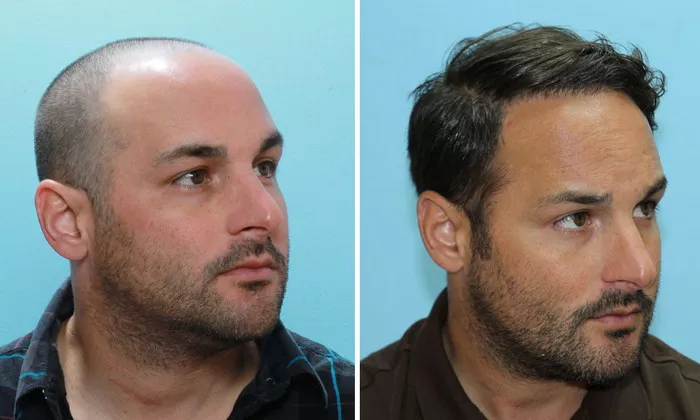A hair transplant is a significant investment in your appearance and confidence. Ensuring the success of this procedure doesn’t end when you leave the clinic. Post-operative care is crucial to protect your new hair grafts and promote optimal healing. This guide provides comprehensive information on how to take care of your hair transplant, covering all essential aspects to help you achieve the best results.
Immediate Post-Transplant Care
The First 24 Hours: Critical Precautions
The initial 24 hours after a hair transplant are vital for the success of the grafts. During this period, the transplanted hair follicles are particularly fragile and require careful attention.
1. Avoid Touching the Scalp: Resist the urge to touch, scratch, or rub your scalp. The grafts need time to settle into their new locations.
2. Sleeping Position: Sleep with your head elevated using pillows or a recliner. This helps reduce swelling and prevents dislodging the grafts.
3. Medication: Follow the prescribed medication regimen, which may include antibiotics to prevent infection and pain relievers to manage discomfort.
4. Avoid Alcohol and Smoking: Both can interfere with blood flow to the scalp, hindering the healing process.
The First Week: Establishing a Routine
Washing and Hygiene
Proper washing techniques are crucial to avoid damaging the new grafts while maintaining scalp hygiene.
1. Gentle Washing: Use a mild shampoo recommended by your surgeon. Gently pour water over your scalp without rubbing or scrubbing. Pat dry with a soft towel.
2. Avoid Direct Shower Pressure: For the first few days, avoid direct water pressure on your scalp. Use a cup to pour water gently over your head.
3. No Hair Products: Refrain from using hair styling products like gels, sprays, or dyes until your surgeon gives the green light.
Dealing with Swelling and Discomfort
Swelling is common after a hair transplant, particularly around the forehead and eyes.
1. Cold Compress: Apply a cold compress to the forehead (not the scalp) to reduce swelling.
2. Medication: Continue taking prescribed anti-inflammatory medications as directed.
3. Avoid Strenuous Activities: Minimize physical activities that could increase blood flow to the scalp, causing swelling.
Weeks Two to Four: Promoting Healthy Growth
Resuming Normal Activities
Gradually reintroduce normal activities while still being cautious.
1. Light Exercise: After about a week, you can start light exercises like walking. Avoid intense workouts, swimming, and contact sports for at least a month.
2. Hair Washing: You can begin washing your hair more thoroughly but still avoid vigorous scrubbing.
Nutrition and Hydration
A balanced diet and proper hydration are essential for hair growth.
1. Protein-Rich Foods: Include foods rich in protein, such as lean meats, eggs, and beans, to support hair health.
2. Vitamins and Minerals: Ensure adequate intake of vitamins A, C, D, E, and minerals like zinc and iron.
3. Hydration: Drink plenty of water to keep your scalp hydrated.
Month Two Onwards: Long-Term Care
Hair Growth and Shedding
It’s normal to experience shedding of the transplanted hair in the first few months. This is part of the natural hair growth cycle.
1. Patience is Key: Hair growth can be slow and varies among individuals. New growth typically starts around the third or fourth month.
2. Follow-Up Appointments: Regular follow-up appointments with your surgeon are crucial to monitor progress and address any concerns.
Ongoing Hair Care
1. Avoid Heat Styling: Limit the use of hair dryers, curling irons, and straighteners to prevent damage to new hair.
2. Mild Shampoos: Continue using mild, sulfate-free shampoos to maintain scalp health.
3. Scalp Massage: Gentle scalp massages can promote blood circulation and stimulate hair growth.
See Also: When Can I Wash Donor Area After FUE: Things You Need To Know
Potential Issues and Solutions
Infection
Although rare, infections can occur. Look out for signs such as redness, swelling, and pus.
Antibiotics: Follow your surgeon’s advice on using antibiotics if an infection occurs.
Consult Your Surgeon: Immediately contact your surgeon if you notice any signs of infection.
Scarring
Scarring can vary depending on the type of transplant (FUE or FUT).
Topical Treatments: Use recommended topical treatments to minimize scarring.
Consult Your Surgeon: Discuss options like laser therapy or microneedling for severe scarring.
Lifestyle Adjustments for Better Results
Stress Management
Stress can negatively impact hair growth. Incorporate stress-relief practices such as:
Meditation and Yoga: These can help reduce stress levels.
Regular Exercise: Engage in regular physical activities that you enjoy.
Avoiding Harmful Habits
Quit Smoking: Smoking can impede blood flow to the scalp and affect hair growth.
Limit Alcohol: Excessive alcohol consumption can dehydrate your body and scalp.
Conclusion
Taking care of your hair transplant requires dedication and adherence to recommended guidelines. From immediate post-operative care to long-term maintenance, each step plays a crucial role in ensuring the success of the procedure. Follow your surgeon’s advice, maintain a healthy lifestyle, and be patient as your new hair takes root and grows. With proper care, you can enjoy the full benefits of your hair transplant and achieve the desired results.


